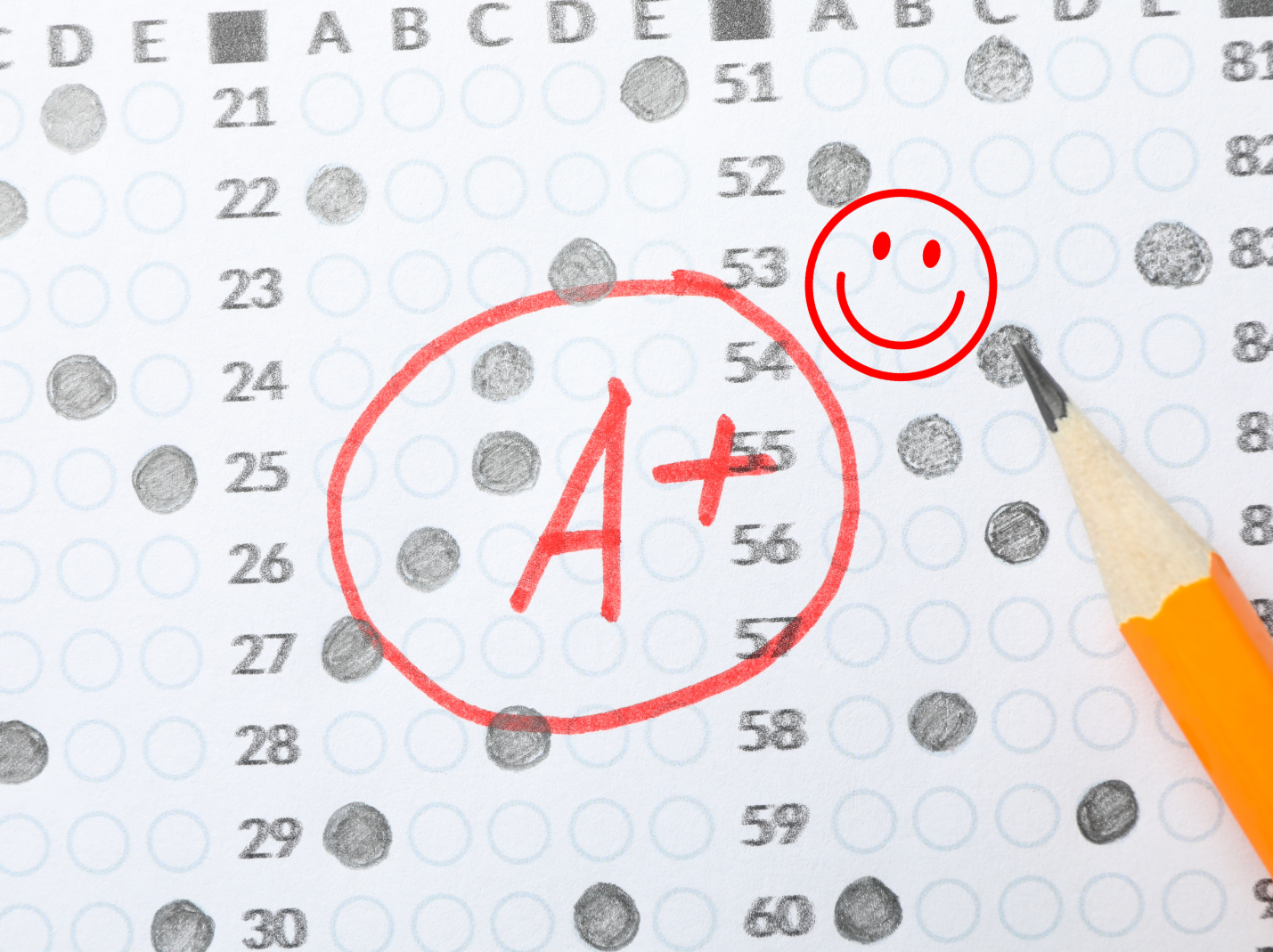
A terrified junior who had just switched her major to science stepped into her General Chemistry I Laboratory like a rabbit in a wolf’s den. Handing the finished pre-lab to her teaching assistant, she returned to her place at the lab bench, a myriad of unpleasant grading scenarios racing through her head.
Not long later, the rustling of returning pre-labs caused the student’s blood pressure to skyrocket. As soon as her eyes landed on her paper, however, her lips curved into a small smile. It is not the ten out of ten that relieved her fears but rather the small smiley face that had been drawn beneath her grade. The student glanced up at her teaching assistant, who smiled at her warmly. From then on, General Chemistry I Laboratory became the class the student looked forward to every week, where she worked eagerly to receive the coveted smiley face, a visual representation of a perfect score.
This is a true account of a student who majored in Behavioral Neuroscience at a small Christian college in South Florida called Palm Beach Atlantic University. That student was me. Over the course of three months in the General Chemistry I Laboratory, my teaching assistant, who always had a gentle and cheerful disposition, became my greatest inspiration. Her example compelled me to inquire about a teaching assistantship, and I joined the chemistry team one year later.
For me, being a teaching assistant is not about making money—it can’t be because you don’t make much at all. It is not about work experience either. The real reward comes from the classroom itself.
The first time I stood on the opposite side of the lab bench—the teaching side—I was ushered into an entirely different universe. Greeted by a sea of eyes, I immediately saw a wide assortment of students sitting before me. Some had expressions of excitement and interest. Others had expressions of reservation and nervousness. Still others, regrettably, demonstrated boredom and indifference. Nevertheless, I felt an immediate sense of compassion and sensitivity toward everyone in the room. I profoundly desired for them all to succeed and to walk away from the class with the same joy and interest my teaching assistant had fostered in me.
The blessings of being a teaching assistant at a small Christian college are profound. With a total student body size of around 4,000, the average class size of a laboratory course is no more than 20. For the professor and teaching assistant alike, no student is ever a number but rather a face with a name, whose blood, sweat, and tears can be seen emanating through every pre-lab and quiz that passes from their hands to mine. Such essential rapport is exceedingly difficult in a large public school where an average student body size exceeds 15,000. In said environments, professors and teaching assistants are hindered from developing any individualized educational experiences that would otherwise greatly benefit the students.
As of late, college closures have been and are still being reported in droves. In the 2022-2023 school year, the National Center for Education Statistics found that all 33 university closures that occurred were of private schools.[1] With such increasing occurrences of failing private universities, the existence of personalized education from a professor and fellowship between the student and the teaching assistant is in serious danger of fading away. The current trajectory will leave students to become once again just another number in a giant secular state school.
Compared with the public institution, the job description of a teaching assistant at a private university is not merely to swipe a red pen across a page. If it were, I would be doing my job very poorly. Ultimately, the responsibility is to be a mentor and a friend. Having endured the arduous journey of an undergraduate science major attempting to stand out in GPA and resume, I am intimately aware of the struggles faced by the students who sit across from me. I have become not only in tune with grade fluctuations but also with the hidden emotions of the students who flow in and out of my classes.
The greatest joy of my job is developing a close bond with my students and being able to encourage them, not only with chemistry concepts but ultimately in their daily lives and walks with the Lord. I take inspiration from the Bible verse 1 Thessalonians 5:11, which reads, “Therefore encourage one another and build each other up” (1 Thes 5:11, NIV). For me, a teaching assistantship is not red marks on an assignment or quiz. It is mentorship. It is camaraderie. It is an inspiration. And it is little smiley faces in the corner of a page congratulating a perfect score.
Explore more from Hannah Hutchins on Muck Rack.
[1] “Degree-granting postsecondary institutions that have closed, by control and level of institution,” National Center for Education Statistics, February 1, 2024. https://nces.ed.gov/programs/digest/d23/tables/dt23_317.50.asp
Image by Atlas — Adobe Stock — Asset ID#: 329392124 & Smiley Face Asset by Twomine — Adobe Stock — Asset ID#: 311576085

I had very good experiences with students at all four of the schools where I taught: a very large land grant school, a very small private school, a medium size state school, and a small state school. But the longer I taught, the worse my relations with the professionals got. 1) Education profs at the land grant school tried to get me fired because I didn’t give answers to my assignments and tests. In addition, some of the new, now called woke, faculty tried to sabotage my doctorate. 2) I was fired at the private high school for “teaching beyond the book” and could not get interviews at other places without a letter from the headmaster. 3) I was fired illegally at the regional state school and couldn’t get interviews because I was a teacher and not a prospective publisher. The first interview I got was sabotaged by someone at the school. 4) I got a job at the 101’st place I applied because they were switching form 2 year degrees to 4 year degrees and wanted a teacher with broad interests. I was attacked for “allowing students to read the books,’ labelled a racist because, as chair of a committee, I invited Walter Williams to come speak and he was “the wrong kind of black,” and several other such things. I was forced to retire because the union president threatened to bundle all the bogus claims and try to deny me my pension.
I never gave smiley faces, but I did smile when i got letters from students telling me how something from my class helped the later in life.
It depends how you define your statistics as public university campi *are* closing, they have closed in Wisconsin, Pennsylvania, Maine, now Arizona, and likely elsewhere.
For example, both Wheelock College and UMaine Machias both closed — Wheelock was absorbed into Boston University and UMaine Machias was absorbed into UMaine Orono, but since the entire UMaine *system* was the degree-granting authority, only Wheelock got counted.
It’s how the NCES defines its statistics — and why you need to consider how they are defined and hence what they mean.
The author is right about what the NCES statistics say, and there are reasons why NCES defines college closure the way it does, but one needs to be careful about how one uses something like this statistic because of how it defines campus closure.